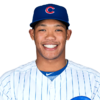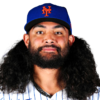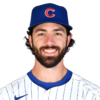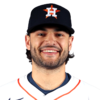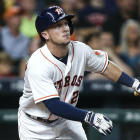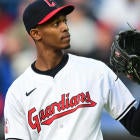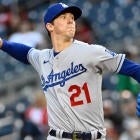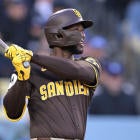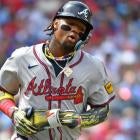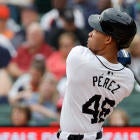When I call a player a "breakout," I'm implying he'll do something he hasn't done before, or at least establish a new baseline value.
That's of course true for most sleepers as well, though they're generally lower-end to begin with. And a sleeper could just be returning to a previous baseline. First-time status isn't inherent to the label.
For the most part, I would say all breakouts are sleepers but not all sleepers are necessarily breakouts. It's a fine line, of course.
The common denominator is value. With each of these players, as with my sleepers, you'll get more than you give.
Really, it's just an excuse to talk about more of the players I like.
You could make the case Diaz already broke out last year, and it's true he'll probably never gain more value than the year he went from minor-league afterthought to Fantasy mainstay. But if early draft results are any indication, he's still being overlooked.
So Manny Machado is the top dog at shortstop, right? But he's followed by a foursome of high-end 20-somethings -- Corey Seager, Carlos Correa, Xander Bogaerts and Francisco Lindor -- to give the position a clear top five.
Diaz actually outperformed three of those five on a per-game basis last year, and considering he's a 20-something sophomore himself (26, to be exact), I'm wondering why he's the one getting drafted 4-5 rounds later.
It probably has something to do with me citing per-game production rather than overall production, but that's only because he missed a month with a broken thumb. I promise no statistical tricks are being played here except for the fact that his number of games is weighted like everyone else's even though eight of them were off the bench. That only makes it more impressive, right?
There's also the issue of how he got here, not following the usual path of hyped prospect to exciting call-up to Fantasy darling -- which conveniently overlooks the major-league contract the Cardinals gave him fresh out of Cuba in 2014, but I get it. He didn't do anything to deserve it that first year. The power wasn't completely out of nowhere, though. It actually started the last two months of 2015, when he homered eight times in 117 at-bats, and then continued to perform at that level in the Arizona Fall League, homering four times in 73 at-bats.
That's enough of a pattern for me to buy into it, and then when you consider how good he is as a contact hitter, delivering one of the 25 lowest strikeout rates last year, I'm not sure which part of his stat line is deserving of skepticism. I mean, he had a .312 BABIP last year. That's theoretically regression-proof.
I'm not saying he gets any better from here, but for the price you'll pay for him, he'll certainly seem like a breakout. He's already shaping up to be my most-drafted player in 2017.
Paxton got some serious love after a solid rookie showing a couple years ago, but he plateaued thereafter and couldn't even secure a rotation spot for the Mariners last spring.
When a Felix Hernandez injury opened the door for him last June, though, something was different about him:
That's his second start back June 6, a 10-strikeout effort against the eventual AL champion Indians, and within it, following a change in arm slot, is a 100-mph fastball registered by the radar gun no fewer than three times.
Paxton had always thrown hard, but something about that third digit opened the door to new possibilities. You almost never saw it from a left-hander, and Noah Syndergaard was about the only other starting pitcher of either side to reach it with regularity last season. Could Paxton become like a mirror image of him?
It seemed like a silly idea because his control wasn't nearly as good, but then he stopped walking hitters, issuing just 1.8 per nine innings over his 20 starts. Not only was it a better rate than Syndergaard had in either of his two major-league seasons, but it would have been top 10 among all pitchers if Paxton had the innings to qualify. And we're talking pitchers like Josh Tomlin, Bartolo Colon, Jerad Eickhoff -- i.e., not the ones boasting a blow-you-away fastball.
But there's more to Syndergaard's success than heat or location. He also has a knockout breaking ball, his slider rating as one of the game's best swing-and-miss pitches with a whiff rate of 28.05 percent. So it's a shame Paxton ditched the curveball that helped distinguish him as a prospect in the first place. Just when he was beginning to emerge as one of the game's preeminent power pitchers, he could have really used something with a little more move --
Wait, what's this?
| | ||||||||
| Game | Fastball | Cutter | Curve | Changeup | ||||
| BOS@SEA (8/1/16) | 65.42 | 23.36 | 8.41 | 2.80 | ||||
| LAA@SEA (8/7/16) | 69.03 | 15.04 | 9.73 | 6.19 | ||||
| SEA@CHW (8/25/16) | 53.33 | 26.67 | 10.00 | 10.00 | ||||
| SEA@TEX (8/30/16) | 59.30 | 10.47 | 19.77 | 10.47 | ||||
| TEX@SEA (9/6/16) | 61.17 | 6.80 | 24.27 | 7.77 | ||||
| SEA@OAK (9/11/16) | 67.35 | 0.00 | 20.41 | 12.24 | ||||
| HOU@SEA (9/17/16) | 51.58 | 2.11 | 24.21 | 4.21 | ||||
| SEA@MIN (9/23/16) | 41.18 | 1.18 | 32.94 | 0.00 | ||||
| SEA@HOU (9/28/16) | 56.04 | 4.40 | 28.57 | 4.40 | ||||
(data from BrooksBaseball.net)
Well, OK. I guess he did bring it back late in the year. Still, there's a difference between having one and dominating with --
| | ||||||||
| Game | Fastball | Cutter | Curve | Changeup | ||||
| BOS@SEA (8/1/16) | 2.86 | 20.00 | 0.00 | 0.00 | ||||
| ANA@SEA (8/7/16) | 8.97 | 17.65 | 27.27 | 28.57 | ||||
| SEA@CHA (8/25/16) | 6.25 | 50.00 | 0.00 | 22.22 | ||||
| SEA@TEX (8/30/16) | 7.84 | 11.11 | 5.88 | 0.00 | ||||
| TEX@SEA (9/6/16) | 14.29 | 14.29 | 20.00 | 12.50 | ||||
| SEA@OAK (9/11/16) | 6.06 | 0.00 | 20.00 | 16.67 | ||||
| HOU@SEA (9/17/16) | 8.16 | 0.00 | 17.39 | 0.00 | ||||
| SEA@MIN (9/23/16) | 2.86 | 0.00 | 32.14 | 0.00 | ||||
| SEA@HOU (9/28/16) | 11.76 | 100.00 | 11.54 | 0.00 | ||||
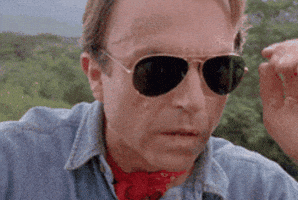
All the time we were wondering how dominant Paxton could be, he was making do without his best pitch?
Nah, it couldn't be.
"It's been a work in progress for the entire year," Paxton told the Tacoma News Tribune after striking nine over seven one-run innings in his game with the highest curveball usage Sept. 23. "Just getting it [consistently] from that arm angle."
Of course ... the new arm angle. You don't suddenly have the feel for something like a curveball after making such a change. So was it all the way back?
"He's got one of the nastiest breaking balls I've ever seen," said teammate and resident hitting savant Robinson Cano.
Let's go to the tape:
OK, we're really onto something now. Those Syndergaard comparisons may in fact be just beginning.
It's a great thing when faith is rewarded, and prospect hounds everywhere got to experience it last year with Dahl, who had rated highly every year since the Rockies selected him 10th overall in the 2012 draft but hadn't yet delivered on it for ... valid reasons.
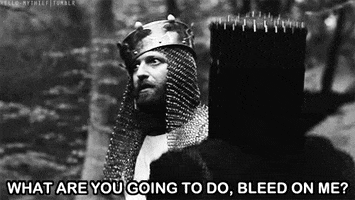
First, there was the suspension for making his own airline reservation after spring training. The Rockies might have cut him some slack for that one if they'd known he would tear his hamstring just a few weeks later -- an injury so bad it required season-ending surgery. But that was nothing compared to the outfield collision in 2015 that ultimately cost him his spleen.
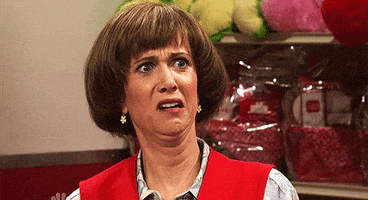
Put it all together, and what seemed like a three-year introduction to professional ball was really more like a year-and-a-half, making Dahl's breakthrough last year, when he hit .315 with 25 homers, 22 steals and a .923 OPS between the majors and minors, closer to right on schedule.
Now, the major-league portion of that stat line did hinge on a .404 BABIP, but it's worth noting that he fell a little short on home run production, which should help compensate for any regression on batted balls in play. And even more notable, he's playing half his games at Coors Field, which is sort of the land of high BABIPs. In fact, all but one of the six Rockies hitters who got more than 400 plate appearances last year had a BABIP of .340 or better, so even if a .315 batting average is too good to be true, .280 or better seems like a reasonable expectation.
Could there be a 20-20 line to go with it? Well, why not? The hope is he develops into something like another Charlie Blackmon, with more power and less speed. A 23-year-old in his first full major-league season would normally be given a wide berth, given the range of possible outcomes, but as successful as Dahl's first half-season was and as much as a safety net as his home park provides, I'd rather not get left out in the cold.
If Coors Field can make Trevor Story, with all of his flaws, an immediate Fantasy stud, then a projectable talent like Dahl should cruise to Fantasy prominence.
Calling Russell a breakout is the sort of prediction you could make blindly just knowing his history as a prospect on the level of Carlos Correa, Francisco Lindor and Corey Seager. It's about time for one, and that's a reasonable argument in and of itself.
But my endorsement of him goes deeper than that. I'm of the mind that 2016 would have been his breakout season if not for some particularly bad luck.
Clearly, he took a step forward power-wise, upping his home run total from 13 to 21. He doesn't need to grow anymore in that regard to become an elite option. The problem was he hit just .238, actually down from his .242 mark the year before.
But it made no sense, if you look at his batted ball tendencies. He upped his line-drive rate, which should have improved his batting average. He lowered his fly-ball rate, which also should have improved his batting average (and him improving his home run output in spite of it is especially encouraging). But the biggest head-scratcher of all is how much more contact he made, dropping his strikeout rate from 28.5 percent (or Justin Upton range) to 22.6 percent (or Brandon Belt range).
That's significant. It's not entirely unexpected for a 22-year-old still warming up to the majors, but it would normally be celebrated for the effect it had on batting average. Not surprisingly, Russell's BABIP fell from a perfectly reasonable .324 to a confounding .277.
If his production ends up rivaling Xander Bogaerts' this year, it wouldn't surprise me. I don't love wagering a 10th-round pick on it knowing I could have Aledmys Diaz just a few rounds earlier and Dansby Swanson several rounds later, but it's something to have on your radar.
You know Blake Snell and Jon Gray, Luke Weaver, De Leon ...
Taillon, Berrios, Urias and Hoffman ...
But do you recall the one rookie who outpitched them all?
Manaea, the A's left-hander
Had a very special change
And if you ever saw it
Watching this won't seem as strange:
All of the other rookies
Kept getting in their own way
And while his walks were high, too
His whiff rates said the league would pay
Then on the 10th of July
Seven shutout frames
Four straight games without a walk
Hey, guess what, it's not just talk:
| | ||||||||
| Game | Fastball | Slider | Changeup | |||||
| OAK@MIN (7/5/16) | 67.05 | 12.50 | 20.45 | |||||
| OAK@HOU (7/10/16) | 50.94 | 8.49 | 40.57 | |||||
| TOR@OAK (7/17/16) | 50.72 | 14.49 | 34.78 | |||||
| TB@OAK (7/22/16) | 56.86 | 14.71 | 28.43 | |||||
| OAK@TEX (7/27/16) | 51.04 | 19.79 | 29.17 | |||||
| OAK@LAA (8/2/16) | 46.24 | 15.05 | 38.71 | |||||
| CHC@OAK (8/7/16) | 49.52 | 20.00 | 30.48 | |||||
| SEA@OAK (8/12/16) | 66.67 | 12.00 | 21.33 | |||||
| OAK@TEX (8/17/16) | 58.65 | 13.46 | 27.88 | |||||
| CLE@OAK (8/23/16) | 55.77 | 5.77 | 38.46 | |||||
| OAK@HOU (8/29/16) | 50.00 | 11.67 | 38.33 | |||||
| OAK@KC (9/14/16) | 61.19 | 7.46 | 31.34 | |||||
| HOU@OAK (9/20/16) | 54.12 | 8.24 | 37.65 | |||||
| OAK@LAA (9/26/16) | 70.93 | 9.30 | 19.77 | |||||
| OAK@SEA (10/2/16) | 63.64 | 12.50 | 23.86 | |||||
Then every start was awesome
Sub-two-fifty ERA
Sub-one WHIP in 14 games
Manaea, folks, is here to stay
Gets swinging strikes like Robbie Ray ...
But walks guys like Cueto, John-nay ...
He's worth. Well. More. Than. What. You'll. Paaaaaaaaaay ...

There's a certain segment of baseball enthusiasts I've learned to hate with the fury of a thousand suns. I call them "those who refuse to acknowledge that which they do not know."
Clearly, I'm not looking to sell t-shirts or anything.
They evaluate by the scientific method, treating player performance like an experiment conducted in some laboratory with a prohibitive (but darn it, we'll try anyway) number of variables. Every data point is carefully documented, analyzed and interpreted, but only after a conclusive number of repetitions. It's a painstaking, insular method of study that leaves no room for imagination, nuance or speculation.
Way to take all the fun out of it, guys.
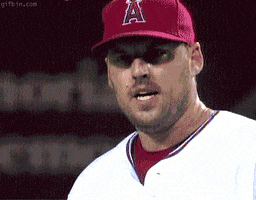
What they, in turn, can't stand are unsubstantiated opinions, including ones as universal and authoritative as this one: Dansby Swanson is going to be a big, fat deal.
"Well, I just don't see the evidence for --"
That's not coming from me, OK? It's an opinion shared by the Diamondbacks front office who drafted him first overall, the Braves front office who considers him the new face of the franchise, the White Sox front office who tried to make him the centerpiece of a Chris Sale deal, every other front office considering he was the consensus No. 1 back in the 2015 draft and any of the prospect gurus on the Web today -- you know, the people paid to be right about these things.
But yeah, you know more because you the divine insight to look at some numbers.
Get ... over ... yourself.
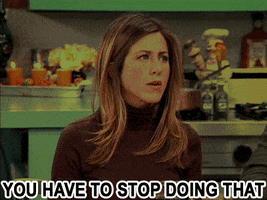
Listen, I'm just being a realist. I recognize that I'm also being paid to evaluate players, to some degree, but I also recognize that, from behind my computer, my place on the hierarchy of evaluators is laughably low. I'm not interviewing for a job here. I'm just trying to win a Fantasy Baseball league. And to do that, the best thing I can do is get out of my own way.
So I choose to view Swanson through industry-tinted glasses. And you know what I see? A player who, after a hurried minor-league existence, hit .302 in his first look major-league pitching, who has the plate discipline and line-drive rate sustain something close to that number, who may never lead his position in home runs or stolen bases but who'll provide enough of both, along with favorable peripherals, to rate among the best in the game at his position, sort of like Francisco Lindor.
That's one comparison, but you know which one Swanson gets the most? Derek Jeter. I mean, that's basically who I just described, only without the legacy and longevity.
"But Jeter wasn't really that good."
Stop it. You're embarrassing yourself.
Maybe if we were approaching Swanson as we did Corey Seager last year, targeting him in Round 6 or so, his lackluster minor-league production would give me pause, but in Round 14 or 15? It's all upside, baby.
Well, now that I've gotten that off my chest, I can focus on the incoming shortstops talents that generate more of a consensus within the Fantasy Baseball community. Chief among them is the guy who was drafted right after Swanson in 2015, Alex Bregman, who loses some points for not actually qualifying at shortstop anymore (the Astros already had a pretty good one in Carlos Correa) but gains points for making the minor leagues his playground, batting .306 with 20 home runs and a .986 OPS in 314 at-bats while, most impressive of all, striking out just 38 times compared to 47 walks.
Kris Bryant could only dream of those numbers back when he was at Iowa.
Bregman's transition to the majors didn't go without a hitch. He began 2 for 38, which had some of our most loyal followers about ready to punch us in the jaw ...
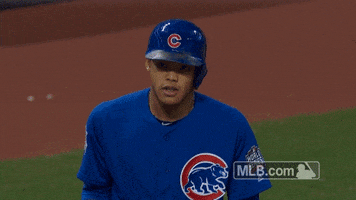
... but he rebounded to hit .313 with eight home runs and a .931 OPS in his final 163 at-bats before suffering a season-ending hamstring injury.
It was more or less as expected for a prospect making that final leap, which is why Bregman is unlikely to slip past Round 6 or 7 on Draft Day, but that's still a pretty tepid endorsement given what he could ultimately become. As disciplined of a hitter as profiles to be, he gets the benefit of the doubt from me and is a perfectly reasonable choice to start at one of the deepest positions in Fantasy.
That's right: I'm drinking the cola for Aaron Nola.
(Now there's a t-shirt!)
It's pretty simple, really. I buy the version we saw in his first 12 starts and not the one we saw in his final eight. I mean, come on, which of these performance screams outlier?
First 12 starts: 2.65 ERA, 0.99 WHIP, 78 IP, 15 BB, 85 K
Final eight starts: 9.82 ERA, 2.06 WHIP, 33 IP, 14 BB, 36 K
Of course, it's still possible he's something in between, and that something could still be really bad. But the peripherals supported what he was doing in those first 12 starts. He was the game's best at getting a called strike and also generated his share of swings-and-misses while making increased use of his curveball. The superior pitchability that made him an obvious fast-track candidate when the Phillies drafted him seventh overall in 2014 was beginning to manifest.
So what happened? Well, he got hurt, right? A strained elbow shut him down in late July, and they all lived happily ever after ... except that it would mean he pitched hurt for two months.
Yeah, that's the part of the narrative that doesn't really fit. We do know that these injuries tend to be slow-developing, but we also know that Nola didn't report any pain until after his final start July 28. Could it be because he was an unproven 23-year-old having the year of his life? It's not an unreasonable thought. The Phillies themselves were concerned enough to rest him for 16 straight days right around the All-Star break.
Considering the widening gap between the haves and have-nots at starting pitcher, where we see maybe 25-30 of the former and no real standouts thereafter, the fact that Nola looked like an ace for a month makes me desperately want to believe in him. And seeing as he's being drafted alongside boring Jeff Samardzija and Marcus Stroman types, well, why the heck not?
This guy? Again? Must we continue to torture ourselves?
I hear you. There's only so long you can hang on to potential, and just because someone of some authority not long ago compared Buxton to Andrew McCutchen -- and even, heaven help us, Mike Trout -- doesn't mean he deserves our undying loyalty.
But we have more information now. Before it really was blind faith because he was positively inept in previous stints in the majors. In his latest stint last September, though, after his umpteenth return trip to the minors, he was anything but.
The line? A .287 batting average, nine home runs and 1.011 OPS in 101 at-bats.

Just a month, I know, and in that month, he struck out at a Chris Davis-like rate. So we still can't be convinced he's good. But for the first time ever, he proved he's capable. He proved he belongs, and if he managed to clear that hurdle, then everything else is still on the table.
Need I remind you he's only 23? Some top prospects are just getting started at that age. In a way, he's a victim of his own success, arriving sooner than ready because the minor leagues couldn't contain him, so perhaps on-the-job learning was to be expected.
But he is learning, and so I'm encouraged. It's still a late-round pick that could go very right for you.
Rodon had a pretty strong finish, too, and the way it was strong to me is particularly encouraging.
What has been the concern for him since the day he debuted in 2015? His ability to throw strikes consistently. And how did he do with that in his final 11 starts? Well, he issued 2.7 walks per nine innings compared to 4.0 in the first 43 appearances of his career.
Not only that, but he averaged 102 pitches in those 11 starts. That sort of efficiency is a requirement for him to take the next step in his development, and the best part is it didn't come at the expense of his stuff. His swinging strike rate only improved during that stretch, and his three best strikeout efforts of the season -- 9, 11 and 10 -- all came in his final five starts.
Overall, he had a 3.11 ERA, 1.18 WHIP and 9.5 strikeouts per nine innings in those 11 starts -- numbers that probably don't stand out too much from most pitchers' best portion of the season. But given his .299 BABIP during that stretch, there was nothing lucky about it.
Rodon is a top-shelf talent with an elite slider and true three-pitch arsenal. If what we witnessed late last year was him turning the corner in terms of control, then all he needs is the expected innings increase for a third-year starting pitcher to overtake Jose Quintana as the White Sox's top starting pitcher.
It's starting to get a little boring, right? All of these closers with the comical strikeout rates.
You have your regulars like Kenley Jansen and Aroldis Chapman, but there might be as many as a dozen relievers capable of ascending to that group. And really, how do you choose between them?
You target the standouts like Edwin Diaz -- that's how.
What makes him so special? Well, his 15.3 strikeouts per nine innings were the second-most in the majors, and he achieved that as a rookie. He also achieved it as a first-year reliever after climbing the minor-league ladder as a starter and, oh, in spite of him allowing five earned runs in his last five appearances, when both he and the Mariners said he ran out of gas.
"The finish to some of his pitches [wasn't there]," manager Scott Servais told the Tacoma News Tribune.
What makes Diaz so special is ... the fact he's so special. His 101-mph fastball is one thing, but his slider might be the best in all of baseball. Its whiff rate of 34.83 put Noah Syndergaard's 28.05 to shame.
Of all the closers vying for elite status, Diaz is best equipped to achieve it, yet because of his lack of track record, he's not getting nearly as much love on Draft Day, dropping outside the top 12 relievers in some leagues.
McCullers' 2016 was like a pitching tornado: violent and awe-inspiring for the short while it lasted.
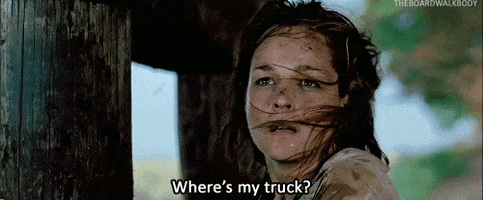

He walked five batters per nine innings -- a prohibitive rate by any standard -- but he also missed bats with uncommon frequency. As much credit as I've given Sean Manaea and Carlos Rodon for their swinging strike rates, McCullers' was more on the level of a (sticking with the same barometer) Noah Syndergaard.
It wasn't by accident either. His curveball usage was far and away the highest of any starting pitcher -- higher than his fastball, even -- and it's so effective that hitters were powerless to stop it. Just look at how many of these third strikes, 20 in all, were helpless waves at the curve. The hitters had to have known it was coming.
Those were in consecutive starts at the end of July, between which McCullers allowed a combined two earned runs on nine hits in 14 innings -- dominated, in other words. He would suffer a season-ending elbow injury his next time out, but he was pretty much cruising in that one as well.
Of course, it's possible the extreme curveball usage is directly responsible for the high walk rate, but seeing as McCullers issued a more manageable 3.1 walks per nine innings in 22 starts as a rookie, when his curveball usage was still among the highest but not to an absurd degree, it's something he can adjust. He may well have already struck that perfect balance if he had gotten more than 14 starts to do so.
I guess I should address the health issue, right? The elbow injury was a sprain, which is a borderline tear and often the precursor to a full-scale one. Pretty scary, especially since he also missed the first six weeks of the season with shoulder issues. But he's expected to have a normal spring training as of now, and by mid-May, that whole episode may just be a distant memory.
For where you can expect to draft him -- i.e., the Round 12-16 range -- you can afford to waste a pick if it comes to that.













